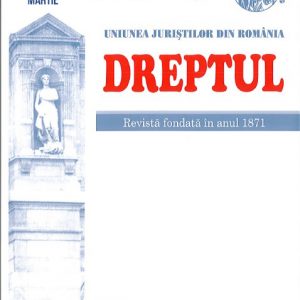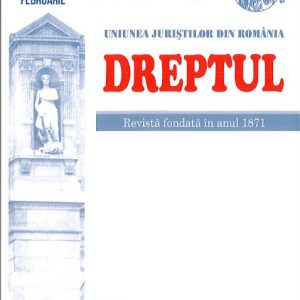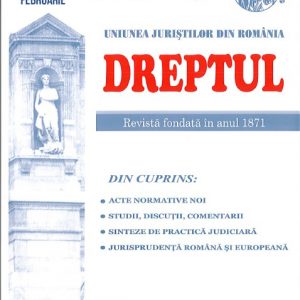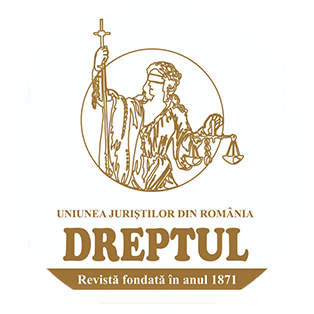-
 In the last decades, administrative law underwent a phenomenon of didactic fragmentation which nobody can ignore today. Numerous monographies within the doctrine of public law, whose purpose – stated in their own titles – is to treat, from multiple perspectives and in a more or less profound manner, (very) narrow subjects of administrative law, have invaded the book market. It happened not only in Romania, but also in France, a country which reasonably claims to be the homeland of administrative law as a branch of law, and therefore as a teaching subject, in its current European continental approach. This literary explosion went hand in hand with an unprecedented proliferation of master studies specializations offered by higher education institutions, in the area of administrative law and/or public administration. Are these phenomena able to fragment the theoretical discourse of administrative law in such a way that this subject loses its unity and, hence, ideological identity? Most likely not. The model proposed by us – that of the five ideological foundations of administrative law – seems to have the ability to prevent the undesirable result hereabove mentioned. With these five ideological foundations – the public administration, the public authority, the public service, the public interest and the public power – almost all the defining and descriptive equations of the major institutions of administrative law (such as the civil service, the public domain, the public enterprise, the unilateral administrative act, the administrative contract, the administrative litigation and public authorities’ financial liability for damage caused by their illegal acts) are likely to be solved. And if this is possible, then the idea of ideological unity/identity of the administrative law is safeguarded, despite the didactic fragmentation previously envisaged.
In the last decades, administrative law underwent a phenomenon of didactic fragmentation which nobody can ignore today. Numerous monographies within the doctrine of public law, whose purpose – stated in their own titles – is to treat, from multiple perspectives and in a more or less profound manner, (very) narrow subjects of administrative law, have invaded the book market. It happened not only in Romania, but also in France, a country which reasonably claims to be the homeland of administrative law as a branch of law, and therefore as a teaching subject, in its current European continental approach. This literary explosion went hand in hand with an unprecedented proliferation of master studies specializations offered by higher education institutions, in the area of administrative law and/or public administration. Are these phenomena able to fragment the theoretical discourse of administrative law in such a way that this subject loses its unity and, hence, ideological identity? Most likely not. The model proposed by us – that of the five ideological foundations of administrative law – seems to have the ability to prevent the undesirable result hereabove mentioned. With these five ideological foundations – the public administration, the public authority, the public service, the public interest and the public power – almost all the defining and descriptive equations of the major institutions of administrative law (such as the civil service, the public domain, the public enterprise, the unilateral administrative act, the administrative contract, the administrative litigation and public authorities’ financial liability for damage caused by their illegal acts) are likely to be solved. And if this is possible, then the idea of ideological unity/identity of the administrative law is safeguarded, despite the didactic fragmentation previously envisaged. -
 The complexity of the problem of configuration of the branches of law requires the recourse to various courts, which, without being infallible, can provide resources to legitimize a solution or another. In this regard, there may be invoked a series of coordinates such as the spirit of the law, as core of the legal knowledge, formed by the contribution of the fundamental concepts, of the principles of law and of its finalities, the interdisciplinary analyzes of the legal phenomenon or the meta-theoretical level of the scientific approach. With regard to this latter point of reference, we are trying to express wider considerations that emphasize plans of specificity, of customization and of specialization, but also processes of generalization and of integration. It is argued that any approach is entitled to cognitively participate in shaping the theoretical or practical solutions. However, no point of view can be declared unique, in a dogmatic, exclusive manner, or infallible, being necessarily open and capable to receive other information in critical or innovating terms, to convert them into a dialectical process of relative and imperfect knowledge, but always perfectible, in relation to a society and to a historical time.
The complexity of the problem of configuration of the branches of law requires the recourse to various courts, which, without being infallible, can provide resources to legitimize a solution or another. In this regard, there may be invoked a series of coordinates such as the spirit of the law, as core of the legal knowledge, formed by the contribution of the fundamental concepts, of the principles of law and of its finalities, the interdisciplinary analyzes of the legal phenomenon or the meta-theoretical level of the scientific approach. With regard to this latter point of reference, we are trying to express wider considerations that emphasize plans of specificity, of customization and of specialization, but also processes of generalization and of integration. It is argued that any approach is entitled to cognitively participate in shaping the theoretical or practical solutions. However, no point of view can be declared unique, in a dogmatic, exclusive manner, or infallible, being necessarily open and capable to receive other information in critical or innovating terms, to convert them into a dialectical process of relative and imperfect knowledge, but always perfectible, in relation to a society and to a historical time. -
 Introducere. Practica judiciară recentă s-a confruntat cu numeroase frământări în legătură cu îndeplinirea elementelor constitutive ale infracțiunii de abuz în serviciu, prevăzută în art. 297 C.pen.
Introducere. Practica judiciară recentă s-a confruntat cu numeroase frământări în legătură cu îndeplinirea elementelor constitutive ale infracțiunii de abuz în serviciu, prevăzută în art. 297 C.pen. -
 Conform prevederilor art. 342 C.pr.pen., obiectul procedurii camerei preliminare îl constituie, printre altele, verificarea legalității administrării probelor și a efectuării actelor de către organele de urmărire penală. Cu această ocazie, judecătorul de cameră preliminară este obligat să constate toate încălcările legii, săvârșite cu ocazia efectuării urmăririi penale și să sancționeze aceste încălcări, dispunând una dintre soluțiile prevăzute în cuprinsul art. 346 C.pr.pen.
Conform prevederilor art. 342 C.pr.pen., obiectul procedurii camerei preliminare îl constituie, printre altele, verificarea legalității administrării probelor și a efectuării actelor de către organele de urmărire penală. Cu această ocazie, judecătorul de cameră preliminară este obligat să constate toate încălcările legii, săvârșite cu ocazia efectuării urmăririi penale și să sancționeze aceste încălcări, dispunând una dintre soluțiile prevăzute în cuprinsul art. 346 C.pr.pen. -
 In this article the author discusses from a constitutional perspective the concept of capital – commonly used by the Constituent Assemblies to designate within the constitutions the headquarters of the national sovereignty authorities. In his comments, the author presents the political conditions and the historical context of choosing Bucharest as residence of the princely court of Walachia mid seventeenth century and the evolution of the city from a historical, political and administrative viewpoint. The study presents in detail the changes suffered by the city of Bucharest during the Organic Regulations that have established administrative measures for its modernization. Bucharest became capital of the United Principalities in 1862 during the reign of Alexandru Ioan Cuza. Since then its status as capital has not been contested anymore, a situation also reflected in provisions of constitutional rank.
In this article the author discusses from a constitutional perspective the concept of capital – commonly used by the Constituent Assemblies to designate within the constitutions the headquarters of the national sovereignty authorities. In his comments, the author presents the political conditions and the historical context of choosing Bucharest as residence of the princely court of Walachia mid seventeenth century and the evolution of the city from a historical, political and administrative viewpoint. The study presents in detail the changes suffered by the city of Bucharest during the Organic Regulations that have established administrative measures for its modernization. Bucharest became capital of the United Principalities in 1862 during the reign of Alexandru Ioan Cuza. Since then its status as capital has not been contested anymore, a situation also reflected in provisions of constitutional rank. -
 The article proposes procedural solutions, in compliance with the requirements of the ECHR practice, when changing the legal classification given to the deed, in appeal, by appreciating that the change in the legal classification given to the deed by the act of referral can be made by an undeniable conclusion, prior to the debate on the appeal, or by the conclusion for reinstating the case on the list of cases, provided that the court has debated the appeal, pending further ruling also for the reason concerning the change in the legal classification, which it found to be well-grounded.
The article proposes procedural solutions, in compliance with the requirements of the ECHR practice, when changing the legal classification given to the deed, in appeal, by appreciating that the change in the legal classification given to the deed by the act of referral can be made by an undeniable conclusion, prior to the debate on the appeal, or by the conclusion for reinstating the case on the list of cases, provided that the court has debated the appeal, pending further ruling also for the reason concerning the change in the legal classification, which it found to be well-grounded. -
 In case of admission of the extraordinary remedy of the contestation for annulment, based on the provisions of Article 426 b) of the Criminal Procedure Code (the defendant has been convicted, although there was evidence of a cause of cessation of the criminal trial), declared exclusively by the convicted person, the court proceeds to rehearing the ordinary remedy of the appeal, in compliance with the principle of non-aggravation of the legal situation of the convicted person, as well as by taking into account, where relevant, the principle of application of the more favourable criminal law in order to calculate the date on which the special prescription period for criminal liability expired.
In case of admission of the extraordinary remedy of the contestation for annulment, based on the provisions of Article 426 b) of the Criminal Procedure Code (the defendant has been convicted, although there was evidence of a cause of cessation of the criminal trial), declared exclusively by the convicted person, the court proceeds to rehearing the ordinary remedy of the appeal, in compliance with the principle of non-aggravation of the legal situation of the convicted person, as well as by taking into account, where relevant, the principle of application of the more favourable criminal law in order to calculate the date on which the special prescription period for criminal liability expired. -
 Following the observations submitted to the Court of Justice of the European Union in the Case C-69/14 Târșia1, EUCJ gave, on 6 October 2015, a preliminary ruling, which held that: the Union law, in particular the principles of equivalence and effectiveness, must be interpreted as not precluding, in circumstances such as those in the dispute in the main proceedings, a national court from not having the opportunity to review a final judgment delivered within civil proceedings, in case this judgment proves to be incompatible with an interpretation of the European Union law retained by the Court of Justice of the European Union subsequently to the date on which the mentioned judgment became final, even if there is such a possibility in respect of final judgments incompatible with the European Union law, delivered within some administrative proceedings.
Following the observations submitted to the Court of Justice of the European Union in the Case C-69/14 Târșia1, EUCJ gave, on 6 October 2015, a preliminary ruling, which held that: the Union law, in particular the principles of equivalence and effectiveness, must be interpreted as not precluding, in circumstances such as those in the dispute in the main proceedings, a national court from not having the opportunity to review a final judgment delivered within civil proceedings, in case this judgment proves to be incompatible with an interpretation of the European Union law retained by the Court of Justice of the European Union subsequently to the date on which the mentioned judgment became final, even if there is such a possibility in respect of final judgments incompatible with the European Union law, delivered within some administrative proceedings. -
 After the adoption and the entry into force of the Law on the administrative disputes No 554/2004, subsequently to the constitutional revision of 2003, the problems of the special administrative jurisdictions are of particular interest, being one of the institutions of the public law meant to ensure the celerity of the settlement of disputes, doubled by the guarantee offered to the litigants, concerning the compliance with the constitutional principle of free access to justice, the right to a fair trial and to the settlement of cases within a reasonable time. In this context, the study intends to make an analysis of the constitutionality of the special administrative jurisdictions regulated by the Law No 554/2004 and in some special normative acts, adopted after the constitutional revision from 2003, in relation to the provisions of Article 21 (4) of the Romanian Constitution revised and republished.
After the adoption and the entry into force of the Law on the administrative disputes No 554/2004, subsequently to the constitutional revision of 2003, the problems of the special administrative jurisdictions are of particular interest, being one of the institutions of the public law meant to ensure the celerity of the settlement of disputes, doubled by the guarantee offered to the litigants, concerning the compliance with the constitutional principle of free access to justice, the right to a fair trial and to the settlement of cases within a reasonable time. In this context, the study intends to make an analysis of the constitutionality of the special administrative jurisdictions regulated by the Law No 554/2004 and in some special normative acts, adopted after the constitutional revision from 2003, in relation to the provisions of Article 21 (4) of the Romanian Constitution revised and republished. -
 This study aims to present the main amendments that were brought to the Labour Code in France by the Law No 1088/2016. The emphasizing of these amendments seems to be a relevant one, given the many similarities between the French and Romanian labour legislation and also the fact that even France, which had a traditional labour legislation, has amended it for the purpose of rendering more flexible labour relations. In order to emphasize the amendments brought, the study contains a few comparative references also with regard to the regulation existing until the adoption of this normative act. As a fundamental guideline, the rights of employers are increased, but there are also regulations favourable to the employees. A change of vision is noticed with regard to the roles of the sources of labour law, for the purpose of bringing to the foreground the collective bargaining at the level of unit, to the detriment of the legal norms and of the conventional norms at level of branch of activity.
This study aims to present the main amendments that were brought to the Labour Code in France by the Law No 1088/2016. The emphasizing of these amendments seems to be a relevant one, given the many similarities between the French and Romanian labour legislation and also the fact that even France, which had a traditional labour legislation, has amended it for the purpose of rendering more flexible labour relations. In order to emphasize the amendments brought, the study contains a few comparative references also with regard to the regulation existing until the adoption of this normative act. As a fundamental guideline, the rights of employers are increased, but there are also regulations favourable to the employees. A change of vision is noticed with regard to the roles of the sources of labour law, for the purpose of bringing to the foreground the collective bargaining at the level of unit, to the detriment of the legal norms and of the conventional norms at level of branch of activity. -
 The new Civil Procedure Code brings some amendments in the procedure of administration of evidence by lawyers, introduced in the Civil Procedure Code of 1865 by the Government Emergency Ordinance No 138/2000. This study details this procedure trying to anticipate a few of the problems that may arise in the judicial practice at the time of using this modality of administration of evidence in the civil lawsuit.
The new Civil Procedure Code brings some amendments in the procedure of administration of evidence by lawyers, introduced in the Civil Procedure Code of 1865 by the Government Emergency Ordinance No 138/2000. This study details this procedure trying to anticipate a few of the problems that may arise in the judicial practice at the time of using this modality of administration of evidence in the civil lawsuit. -
 Aspecte generale privind incriminarea faptei de abuz în serviciu. În Codul penal în vigoare infracțiunile de corupție și cele de serviciu sunt prevăzute în două capitole distincte ale titlului V din Partea specială – „Infracțiuni de corupție și de serviciu”. Ceea ce caracterizează în principal grupul infracțiunilor de serviciu sau în legătură cu serviciul este valoarea socială apărată, și anume bunul mers al activității instituțiilor și organizațiilor publice, regiilor autonome sau oricăror alte persoane juridice cu capital integral ori majoritar de stat sau declarate ca fiind de utilitate publică și, implicit, apărarea intereselor legale ale persoanelor particulare.
Aspecte generale privind incriminarea faptei de abuz în serviciu. În Codul penal în vigoare infracțiunile de corupție și cele de serviciu sunt prevăzute în două capitole distincte ale titlului V din Partea specială – „Infracțiuni de corupție și de serviciu”. Ceea ce caracterizează în principal grupul infracțiunilor de serviciu sau în legătură cu serviciul este valoarea socială apărată, și anume bunul mers al activității instituțiilor și organizațiilor publice, regiilor autonome sau oricăror alte persoane juridice cu capital integral ori majoritar de stat sau declarate ca fiind de utilitate publică și, implicit, apărarea intereselor legale ale persoanelor particulare.
